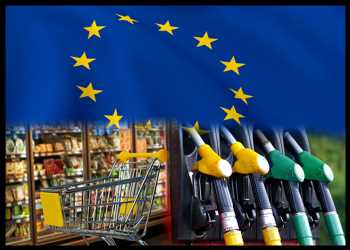Eurozone Inflation Slows To 15-Month Low; Lagarde Signals More Hikes
Confirming the downward trend, Eurozone inflation eased sharply to a 15-month low in May and core inflation slowed for the second month, but the European Central Bank President Christine Lagarde said more monetary policy tightening is needed.
Inflation eased to 6.1 percent in May from 7.0 percent in April, flash data from Eurostat showed on Thursday. The rate was forecast to slow to 6.3 percent.
This was the lowest rate since February 2022, when inflation was 5.9 percent. Russia’s invasion of Ukraine began that month and later this triggered an unprecedented surge in energy prices across Europe that led to runaway inflation.
Core inflation that excludes energy, food, alcohol and tobacco prices, slowed more than expected to 5.3 percent from 5.6 percent in the previous month. The rate was seen at 5.5 percent.
Inflation remains high and there is no clear evidence that it has peaked, ECB chief Lagarde said in a speech in Hanover on Thursday.
“We have made clear that we still have ground to cover to bring interest rates to sufficiently restrictive levels,” Lagarde said.
Past rate hikes are feeding forcefully into bank lending conditions and considerable tightening is still in the pipeline, she added.
“We need to continue our hiking cycle until we are sufficiently confident that inflation is on track to return to our target in a timely manner,” Lagarde said.
Slowdown in inflation and disappointing economic data will no doubt embolden the doves in the ECB’s governing council but concerns around higher wage growth bolster the hawkish view, ING economist Bert Colijn said.
In May, the ECB had raised its benchmark rate by a quarter-point and hinted at more hikes as inflation is set to remain too high for too long. Nonetheless, the bank had softened its pace of tightening from 50 basis-point hike in March.
The ECB has more or less committed to a June hike but things are more uncertain from thereon, ING economist Colijn noted.
All components of the harmonized index of consumer prices posted a slower growth, while energy prices logged a decline from a year ago.
Food, alcohol and tobacco prices grew 12.5 percent annually, slower than the 13.5 percent increase in April. Energy prices slid 1.7 percent, reversing a 2.4 percent rise.
Cost of non-energy industrial goods gained 5.8 percent after a 6.2 percent rise. Likewise, growth in services cost eased to 5.0 percent from 5.2 percent.
Source: Read Full Article

